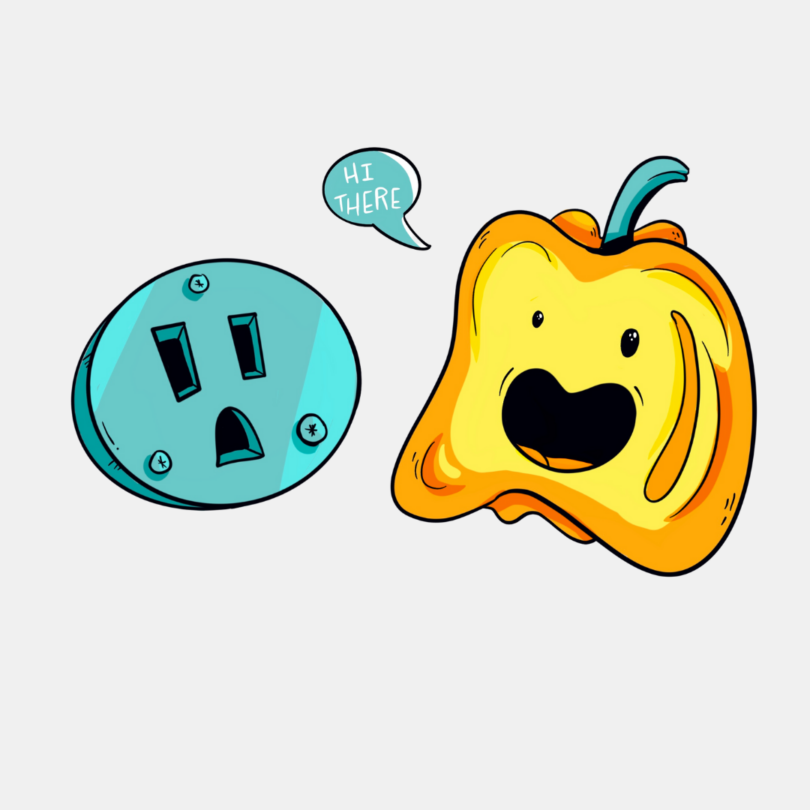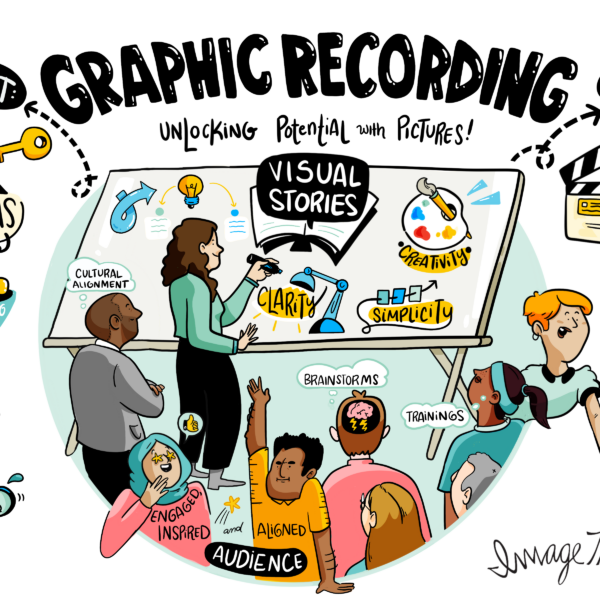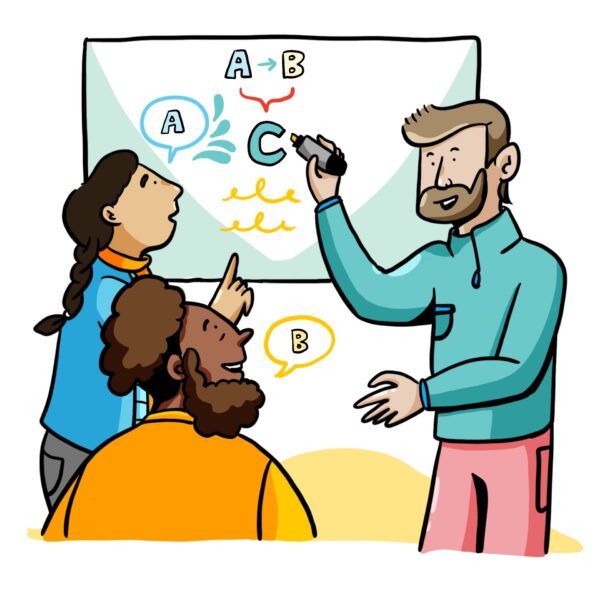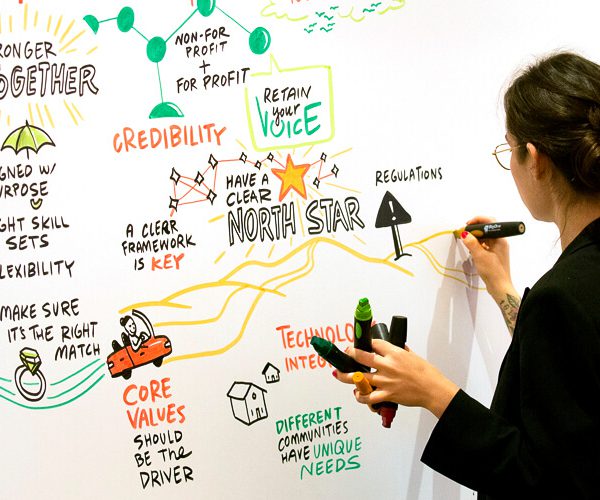Sometimes, it can be difficult for new clients to understand why graphic recording and graphic facilitation is so effective. This article is part of an ongoing series, It’s a Visual World. In it, we explore everyday experiences that showcase the myriad ways our brains work more efficiently with visual input. Look for areas in your daily life for the visual iconography you rely on, then give us a call. Seeing is believing.
What is Pareidolia?
You’ve probably encountered photos on Twitter or Instagram of an inanimate object with a comically (or perhaps eerily) human-like face. Maybe you follow the #facesinthings hashtag or subreddit. More than being good for just a laugh, this phenomenon has a name, and some interesting science behind it.
The word pareidolia comes from Greek, and directly translates to “wrong shape.” It doesn’t exclusively apply to faces and can in fact describe anytime one object is mistaken for another by the human eye and brain. It is demonstrated when a person sees shapes or objects in the clouds, hears “secret” messages* in music (Dark Side of the Moon listening party, anyone?), or participates in one of Rorschach’s inkblot tests.

Why do we see Faces In Things? Humans are naturally Visual Thinkers!
Scientists and evolutionary psychologists have actually studied why humans see faces everywhere. It all starts in the region of our brain called the fusiform gyrus. This region is dedicated to perceiving faces, and is active in people from early childhood. Humans are believed to have developed pareidolia as an evolutionary advantage, and survival tactic.
From the beginning, it is theorized that the babies of early man were better nurtured and cared for when they perceived and responded to human faces. Additionally, as s/he grew, early human’s recognition of faces, even where none existed, served as a defense mechanism against apex predators.
Imagine early man, hunting and gathering in the wild. Seeing faces or face-like shapes in dark caves or nestled in the bushes, would act as an early warning system, putting an individual in a higher state of alert, ready to spot danger, whether the face was real or imagined.
Put it this way, would it be better to think you saw a saber-toothed cat in the brush, and be wrong, or to not recognize one when it was actually there?

Fascinating, But How Can I Leverage Pareidolia at my business?
Spotting a fire hydrant that looks like Bert or Ernie is great, and the neuroscience is certainly interesting, but how can we apply it to something beyond our innate curiosity?
It should come as no surprise that, as graphic recorders, we believe that the existence of pareidolia is further argument for using visuals in your daily communications and meetings.
Our brains are naturally wired to respond to shapes and visuals on an emotional level, and to immediately process visual information. Including drawings in your notes and whiteboarding sessions, whether a complex machine or a simple stick figure, will help elicit a response from your audience, and will strengthen its members’ emotional connection to your material.
To start incorporating visuals into your daily communications, get in touch with ImageThink and learn how we can help train you and your team to harness the “power of the pen” for more creative brainstorms and to become visual leaders.
It’s not rocket science. Or brain surgery. It’s just brain science. Y’know, simple.

*As an interesting side note, pareidolia is not to be confused with apophenia, a term coined by German neurologist and psychiatrist Klaus Conrad, although the two are frequently experienced in tandem. When a person experiences apophenia, s/he takes pareidolia a step further and assigns greater meaning to the perceived shape. So, seeing the Virgin Mary in your morning toast is an example of pareidolia, but believing that her presence on your breakfast plate is a sign from God would be an example of apophenia.

Let's Face It – You Need a Graphic Recorder
Contact us today to see how the ImageThink team can help leverage your business with visuals.



